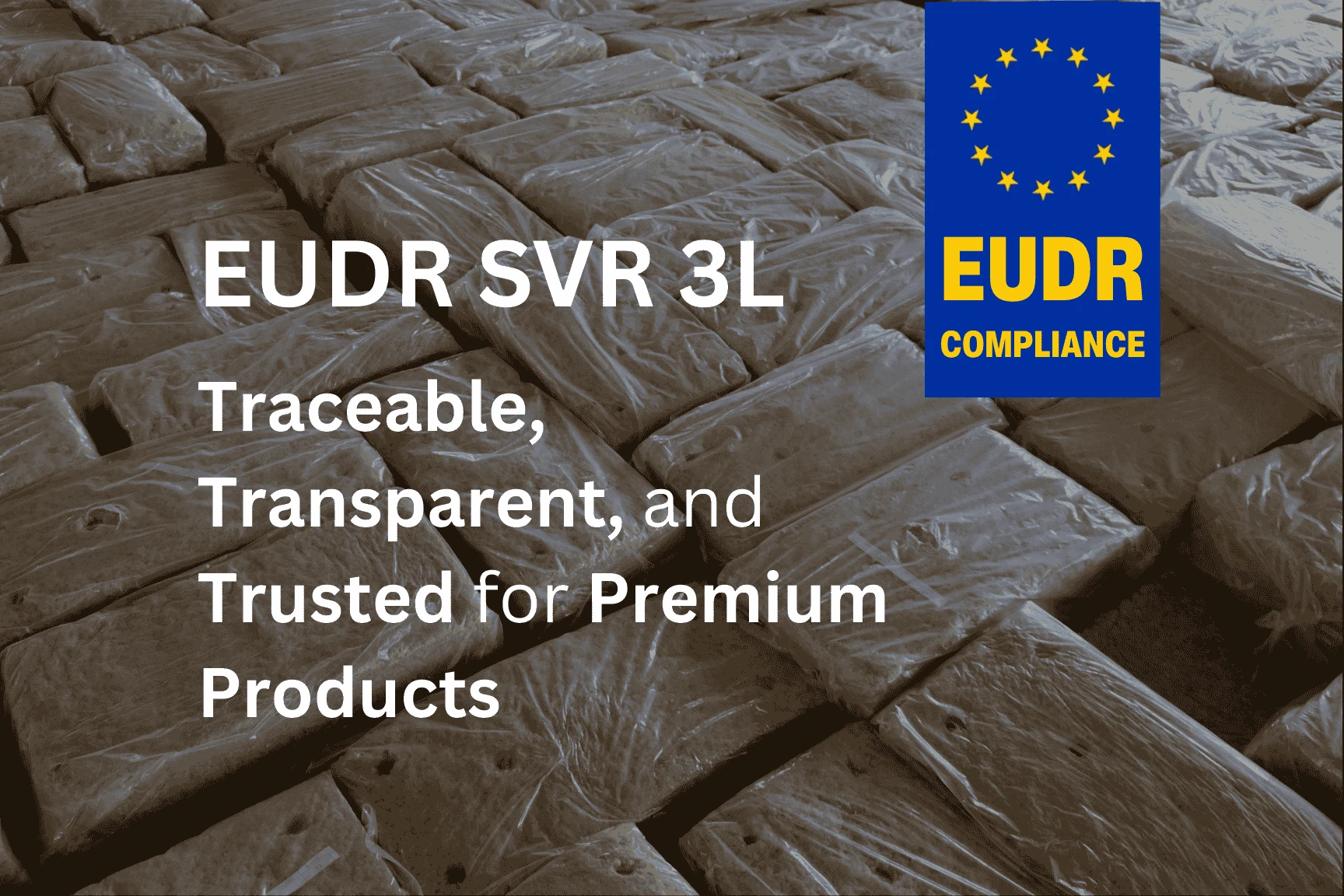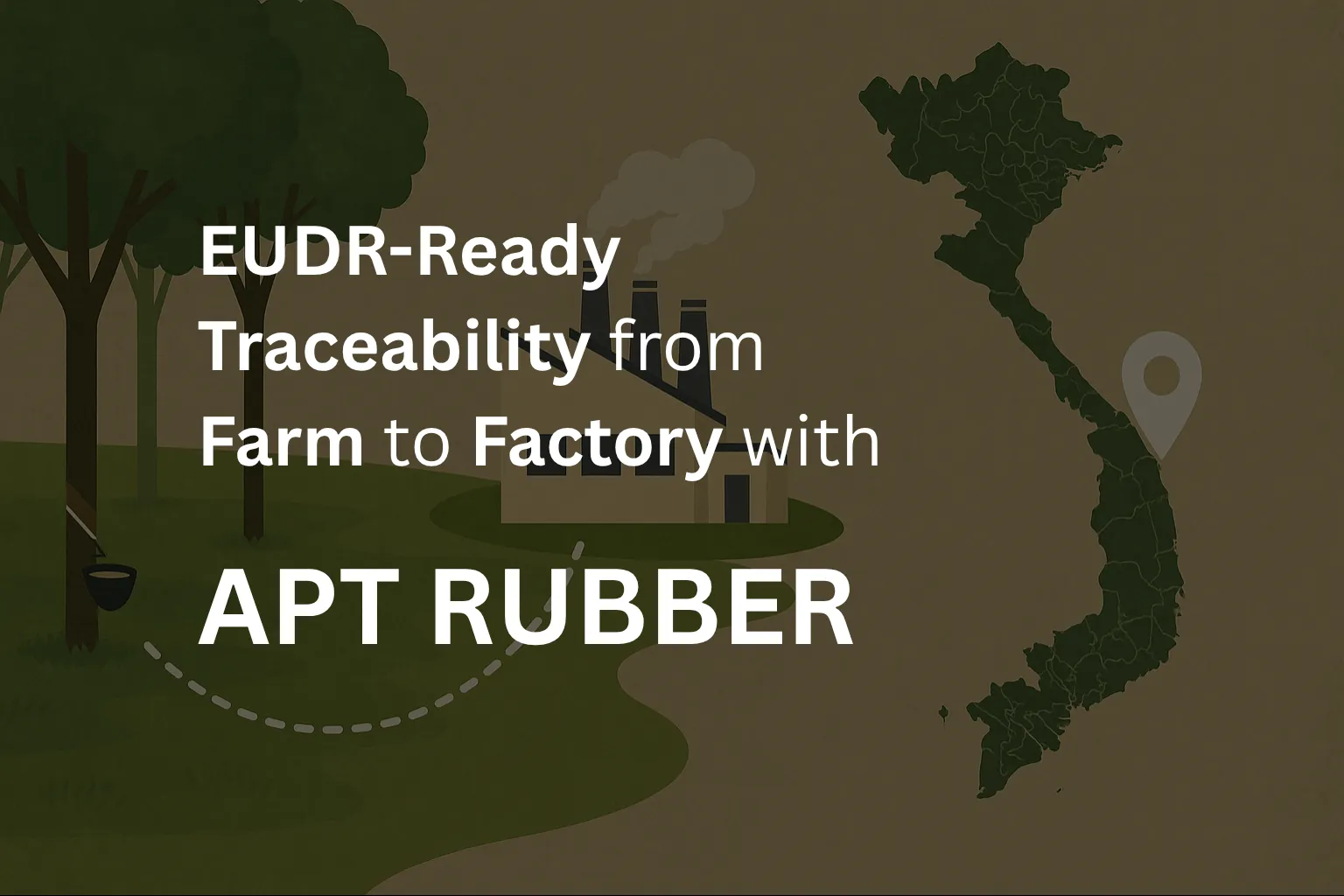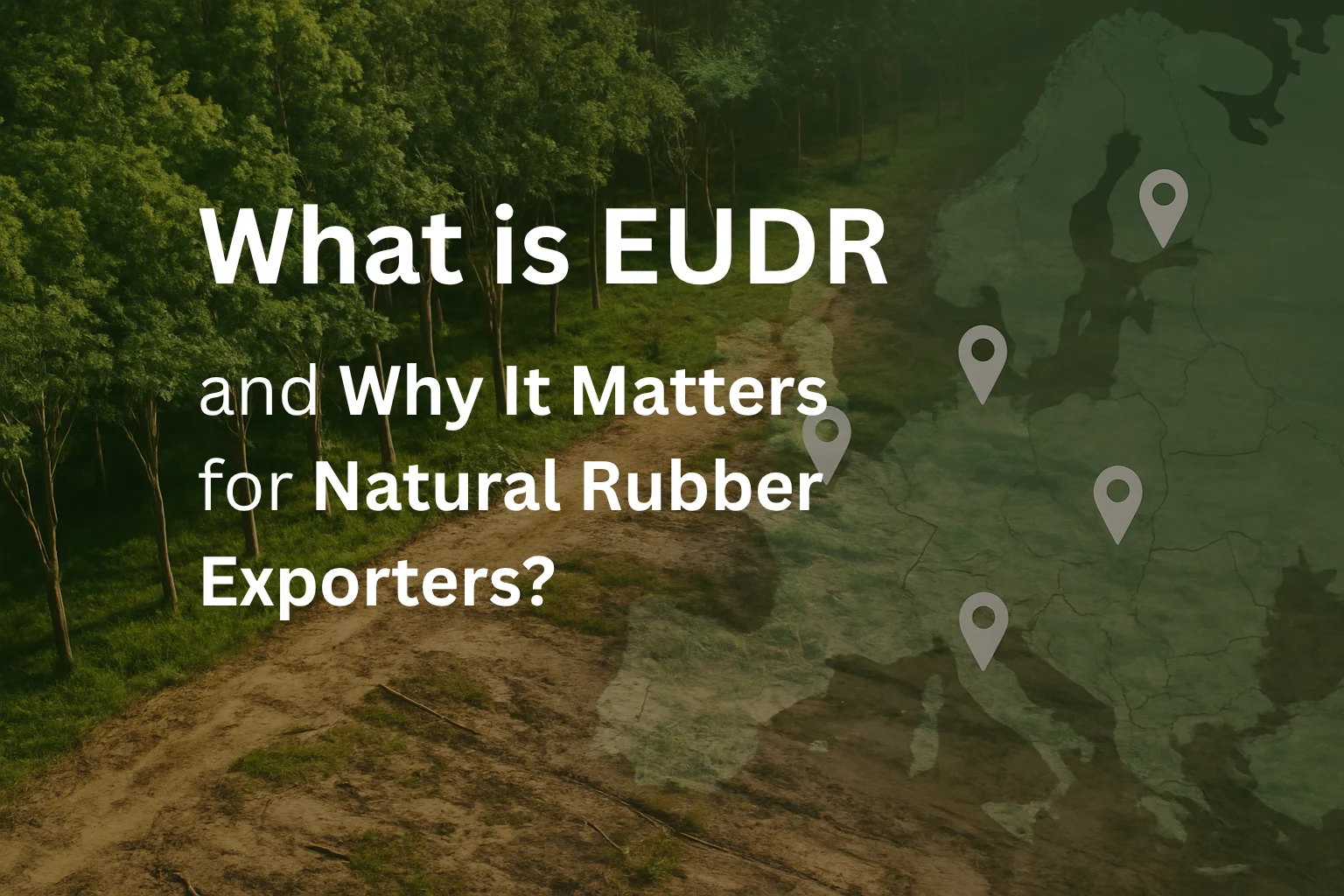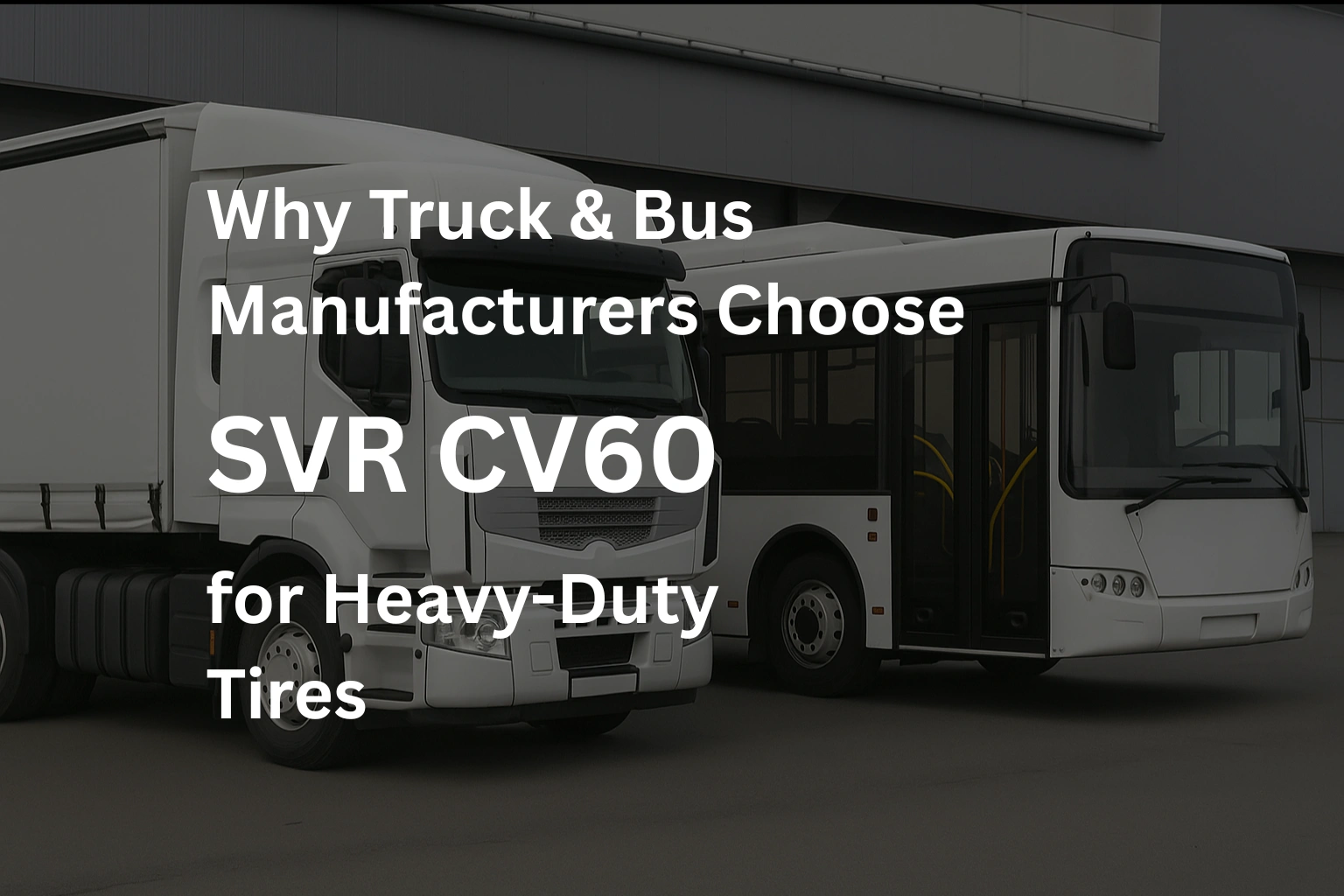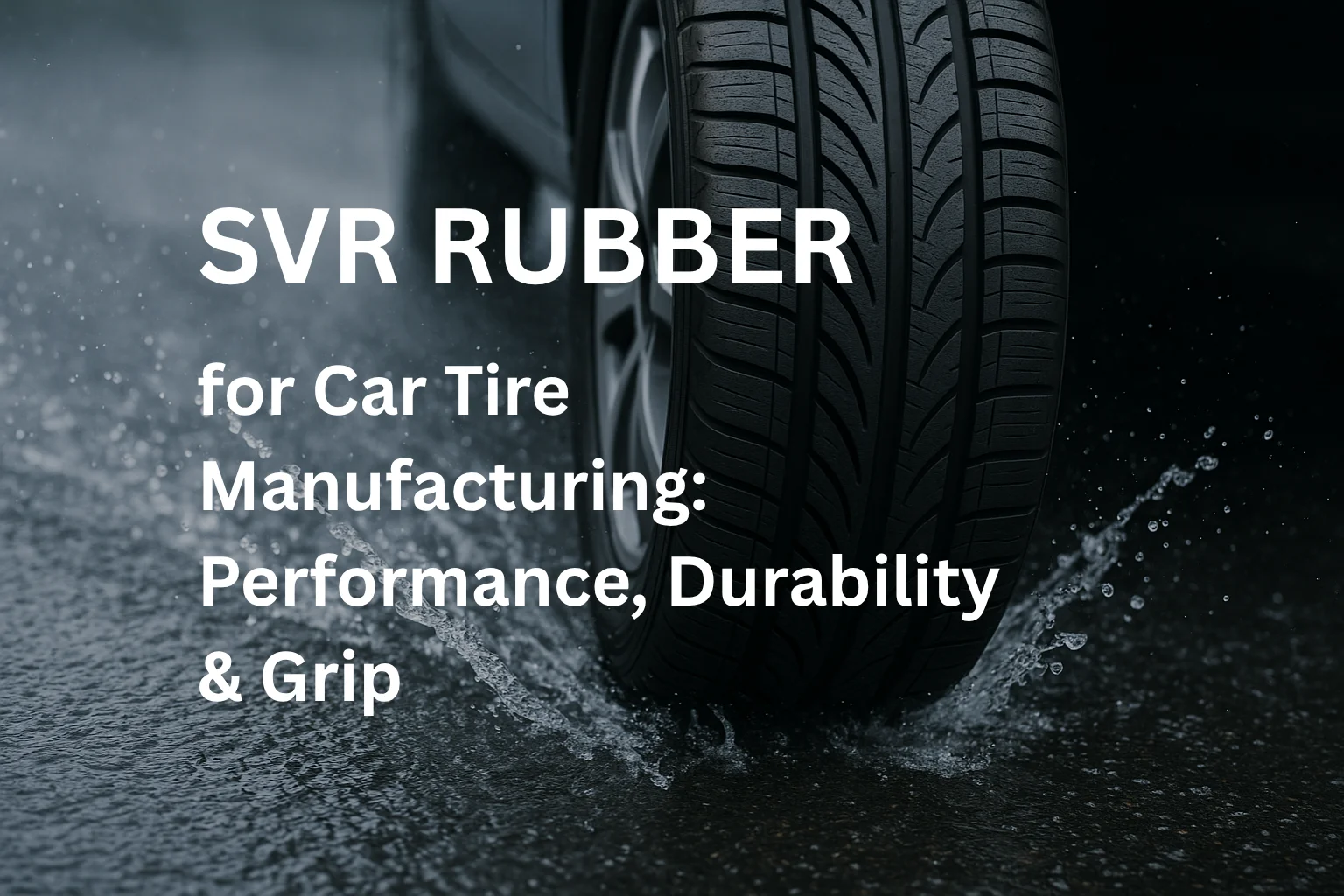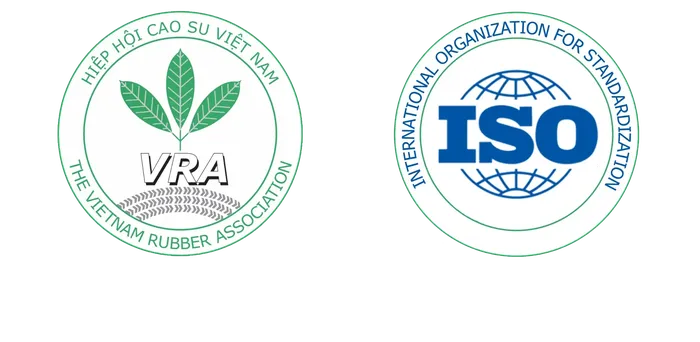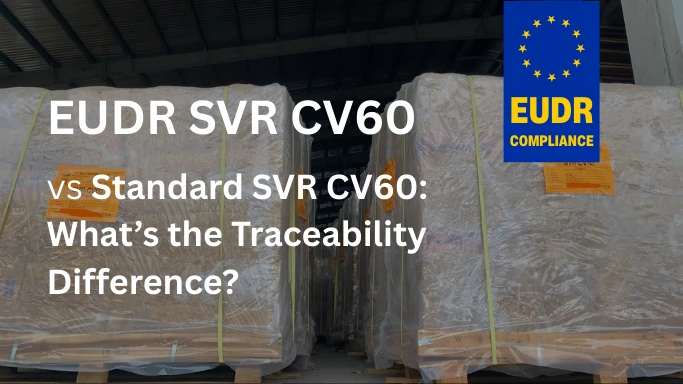
1. SVR CV60: The Constant Viscosity Workhorse
SVR CV60 stands for Standard Vietnamese Rubber, Constant Viscosity 60. This standardized technical rubber is prized for its Constant Viscosity (CV) property, maintained at around 60 Mooney. It is an indispensable material in industries demanding high quality and absolute consistency, especially in the manufacturing of heavy-duty tires and complex rubber compounds for the automotive industry.
2. The Core Difference: Supply Chain Transparency
What is the difference between EUDR SVR CV60 and standard SVR CV60?
The difference is not in the physical properties but in the legal documentation and supply chain transparency:
| Feature | Standard SVR CV60 | EUDR SVR CV60 |
| Technical Quality | Constant Viscosity (CV60), meets TCVN standards. | Identical technical quality (CV60). |
| Traceability Level | Traceability ends at the processing factory (Batch Level). | Traceability to the individual plot/farm (Polygon/Geojson). |
| Legal Documentation | Certificate of Origin (COO), Quality Certificate. | DDR (Due Diligence Report), proof of Deforestation-Free status post 31/12/2020. |
| Market Value | Suitable for non-EUDR regulated markets. | Mandatory for export to the EU Market & EU Supply chain after Dec 2025. |
How does EUDR compliance change the traceability of SVR CV60 rubber?
Before EUDR, SVR CV60 traceability often stopped at the factory or batch level. With EUDR, traceability must extend to:
- Precise Geographical Location: Providing Polygon/Geojson coordinates for the land plots where the rubber latex was harvested.
- Deforestation-Free Status: Proving these plots were not subject to deforestation or forest degradation after December 31, 2020.
- Transaction Linkage: Linking every kilogram of final SVR CV60 product to its corresponding transaction record, due diligence status (DDR), and geographical coordinates.
3. Cost and Quality Implications
Is there any quality difference between EUDR SVR CV60 and regular SVR CV60?
No. In terms of physical chemistry and technical performance, there is no difference. Both types must meet the stringent technical specifications of SVR CV60 (such as viscosity, ash content, nitrogen content, etc.).
The difference lies in the “ethical footprint” accompanying the product; EUDR SVR CV60 carries added sustainable value and proven legal compliance.
Why is EUDR-compliant SVR CV60 more expensive?
The price increase stems from the hidden costs of compliance:
- Technical Investment: Costs for GIS mapping systems, satellite technology, and traceability data management platforms.
- Personnel Costs: Costs for training, hiring Due Diligence experts (DDS), and personnel managing data at the factory and purchasing points.
- Smallholder Support Costs: Costs associated with collaboration and technical assistance for smallholders to provide coordinate data and maintain plot legality.
These costs are necessary to transform raw rubber into a compliant and sustainable value-added product.
4. Sourcing and Manufacturers
Where to buy SVR/TSR CV60 EUDR?
Buyers should seek Operators or Manufacturers in Vietnam who have publicly committed to and achieved EUDR readiness.
- Companies like APT Rubber (An Phu Thinh Rubber) are pioneers who have established full traceability systems to supply EUDR-compliant SVR (including CV60).
Look for large factories or groups under the VRG (Vietnam Rubber Group) that have invested in compliance programs.
Manufacturer of SVR/TSR CV60?
Major rubber factories in Vietnam are the primary producers of SVR CV60. To source EUDR SVR CV60, prioritize partners who can openly demonstrate their DDS process and the capability to provide Polygon/Geojson data.
5. EUDR Traceability Checklist for SVR CV60 Suppliers
To prove SVR CV60 is EUDR-Compliant, suppliers need to meet the following checklist:
Item | Compliance Requirement |
1. Origin Proof | Polygon/Geojson data for all source land plots supplying raw latex. |
2. Deforestation Proof | Satellite imagery analysis confirming the plot was Deforestation-Free after 31/12/2020. |
3. Legality | Documentation proving legal land use rights and compliance with local laws. |
4. Batch Traceability | Records linking each SVR CV60 batch to the specific source plots (Polygon IDs) and purchase records. |
5. DDS Record | Maintaining and submitting the DDR (Due Diligence Report) for the shipment. |
Conclusion
The difference between EUDR SVR CV60 and standard SVR CV60 lies in sustainable value and proven geographical traceability. The higher cost is an essential investment in the product’s transparency and ethical profile.
EU buyers are now seeking not just Constant Viscosity (CV60) but also guaranteed compliance. Pioneering companies like APT Rubber (An Phu Thinh Rubber) are leading the way in providing this solution. APT Rubber is committed not only to producing high-quality SVR CV60 but also to supplying the product with complete Polygon/Geojson data and the Due Diligence Report (DDR), enabling EU customers to easily fulfill their legal obligations. Choosing EUDR SVR CV60 from reputable suppliers is the optimal strategy for ensuring a stable and sustainable supply chain.

